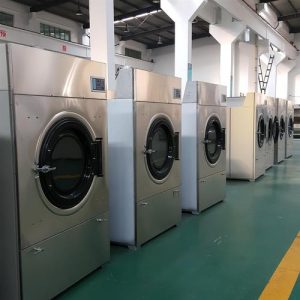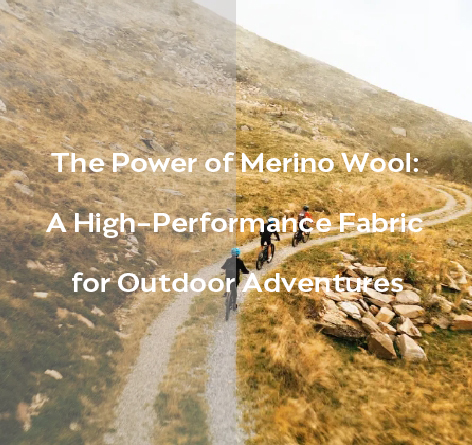In the ever-evolving landscape of apparel, where trends swiftly shift with the winds of change, a significant revolution brews beneath the surface. A move towards ecological preservation is meticulously redefining knitwear’s core, shining a light on methodologies that assure a verdant earth and a more principled sphere of fashion. At this revolution’s heart lies sustainable knitwear, entwining environmental mindfulness with the age-old craft of knitting, crafting a road to a utopia where vogue and environmental stewardship gracefully intersect.
Sustainable knitwear encapsulates attires fabricated from environmentally benign materials through processes exerting minimal adverse effects on our surroundings. This holistic approach spans the product’s journey from the procurement of base materials through to fabrication, allocation, and ultimate disposal. Emphasizing organic, repurposed, or inexhaustible resources and adhering to energy-conservative manufacturing methodologies, sustainable knitwear endeavors to curtail the environmental footprint left by the fashion arena.
The textile domain stands as a behemoth in resource consumption, gulping down vast quantities of water and energy, and standing as a colossal source of contamination and debris. Traditional methods of crafting items, including knitwear, frequently employ practices detrimental not just to our environment but also to ethical standards. With climate change’s ramifications becoming ever more tangible, and as societal consciousness surrounding human rights magnifies, the clamor for eco-friendly alternatives has exponentially risen.
A commitment to sustainability within the realm of textile production is pivotal for myriad reasons. Environmentally, it ensures the conservation of our planet’s reserves, mitigates pollution, and battles the impending climate crisis. Socially, it guarantees improved labor conditions and equitable remuneration for industry workers. Economically, adopting sustainable practices can bolster material and energy utilization efficiency, slashing expenses over time. Fundamentally, embracing ecological responsibility champions the health of our world and its populace, rendering it an indispensable stride for the textile industry.
Delving deeper into the realm of sustainable knitwear, it’s evident that this shift isn’t merely a fleeting fad but an essential evolution in our fashion consumption and production paradigms. By advocating for sustainability, we’re not just crafting attires that boast aesthetics and durability but also show reverence towards nature and its custodians.
Choosing the Eco-Friendly Materials
When it comes to sustainable knitwear, the selection of materials is paramount. Traditional fibers, often grown with pesticides and synthetics, can wreak havoc on the environment. In contrast, sustainable knitwear relies on fibers that are either organic or recycled, significantly reducing the ecological footprint from the very beginning of the production process.
- Organic Fibers

Organic fibers, such as organic cotton and wool, are cultivated without the use of harmful pesticides, synthetic fertilizers, or genetically modified organisms (GMOs). This farming approach ensures that the soil remains healthy, water systems are protected, and biodiversity is preserved. Organic cotton, for instance, uses far less water than conventional cotton and supports cleaner waterways Organic Trade Association Textile Exchange. Organic wool, sourced from sheep raised under humane conditions, promotes animal welfare and contributes to ecosystems’ regeneration through responsible grazing practices Global Organic Textile Standard.
- Recycled Fibers
Recycled fibers offer an innovative solution to the issue of textile waste. Materials such as recycled polyester and recycled wool are crafted from post-consumer waste, like plastic bottles or discarded garments, which would otherwise end up in landfills Textile Exchange. This process involves breaking down the waste materials and re-spinning them into new yarns, drastically reducing the need for virgin resources and minimizing the overall environmental impact. Besides reducing landfill waste, recycled fibers also require significantly less energy and water to produce compared to their virgin counterparts.
- Innovative Sustainable Materials
Beyond organic and recycled options, sustainable knitwear manufacturers are increasingly exploring innovative materials that leave an even smaller environmental footprint. Bamboo, hemp, and Tencel are becoming popular choices due to their minimal resource requirements and biodegradable nature. For example, Tencel, made from sustainably sourced wood pulp, is noted for its softness, durability, and low environmental impact, as it utilizes an efficient closed-loop production process Lenzing Group.
Greener Production Processes
Sustainable knitwear isn’t just about what materials are used; it’s also about how these materials are transformed into garments. Manufacturers dedicated to sustainability implement a variety of methods to ensure their processes are as eco-friendly as the fibers they use.
- Water Conservation Techniques
Water is an essential resource in textile production, yet conventional dyeing and finishing processes often consume large quantities and contribute to pollution. Sustainable manufacturers adopt water conservation techniques, such as closed-loop water recycling systems, which allow water to be purified and reused within the production cycle. This dramatically reduces freshwater consumption and prevents water contamination. For more than a decade, Guoou Fashion has signed long-term cooperation agreements with yarn suppliers that focus on sustainable development and is committed to becoming a sustainable knitwear manufacturer.
- Energy Efficiency

Energy consumption is another critical consideration. Sustainable knitwear manufacturers prioritize the use of renewable energy sources like solar, wind, or hydropower over fossil fuels. These practices not only lower greenhouse gas emissions but also set a positive example for the broader fashion industry. Energy-efficient machinery and production techniques further contribute to reducing the carbon footprint of knitwear production.
- Waste Reduction and Recycling
Minimizing waste is integral to sustainable knitwear manufacturing. Manufacturers strive to create a circular economy by recycling production scraps and ensuring that leftover materials are repurposed rather than discarded. This might involve reusing yarns in new products, donating scraps for crafts and educational projects, or even developing new products entirely from recycled waste.
- Low-Impact Dyeing and Finishing
The dyeing and finishing stages are known for their heavy environmental toll due to the chemicals involved. Sustainable knitwear brands use low-impact and natural dyes, which are free from harmful substances and require less water and energy. Techniques such as digital printing and air-dyeing also reduce waste and pollution, allowing for precise application with minimal resource use.
- Water Washing Procedures

To further protect the environment, some regions in China have established specialized areas known as “Washing Areas” for the water-washing process of knitwear. These centralized facilities are directly regulated by local governments, ensuring that environmental and energy-saving standards are strictly adhered to. By consolidating the water washing operations, these wash cities provide effective oversight, reducing the environmental impact and enhancing the efficiency of water use. This method streamlines the process and underscores the industry’s commitment to sustainability.
Conclusion
By adopting these sustainable materials and methods, knitwear manufacturers are making a difference in creating knitwear that is both stylish and durable, as well as earth-friendly. This commitment to sustainability helps ensure that the garments we love today do not come at the expense of the environment we depend on tomorrow.
As a sustainable knitwear manufacturer, Guoou Fashion began recognizing the importance of sustainability in knitwear production a decade ago and has made a concerted effort to minimize negative impacts on the environment. By focusing on resource efficiency and reducing waste, GOO aims to set a realistic example for the industry, showing that sustainability and profitability can go hand in hand.
A commitment to sustainable knitwear manufacturing is more than just adhering to current trends; it means taking responsible actions today to benefit the planet and future generations.




